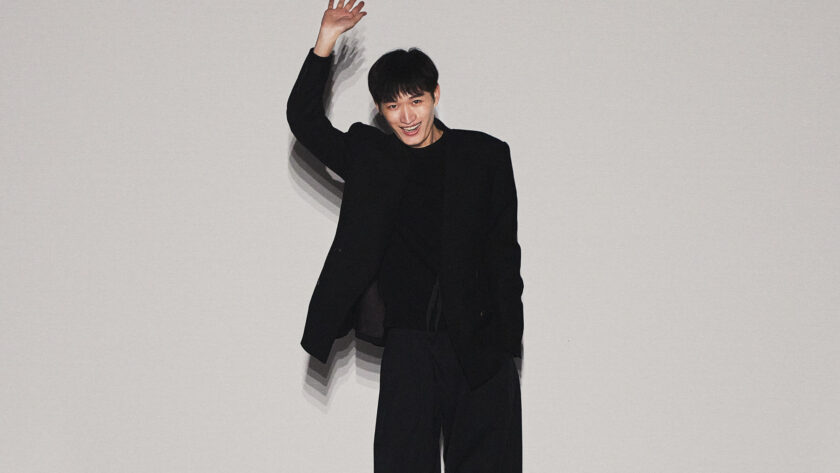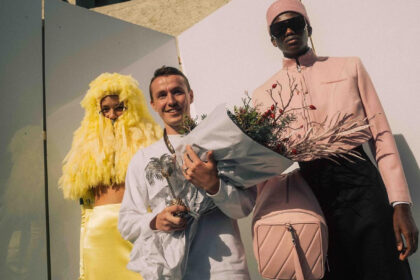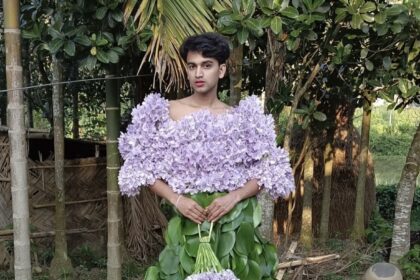The Jingdezhen-born creative director Peng Chen, is proficient in his craft of puffer making.
Taught in London, he blends approaches from the East and the West creating memorable shapes. Creating garments that embrace inclusivity through a “one size” approach, accommodating diverse body types. In recent years, is known to collaborate with leading fashion houses, MM6 and Moncler.
CHENGPENG’s recent show in Paris, which took place during the womenswear calendar, was titled “Moments of Life.” The collection reflects his emotional journey, blending red for passion and black for sobriety. Inspired by his father’s suits and ceramic culture, the collection merges tailored down suits with gown silhouettes. Symbolising life’s fleeting moments and craftsmanship’s timeless beauty.
China-France – March
Email:
AD: Alisa Dylevy
PC: Peng Chen
AD: Congratulations on your recent collection FW24-25 in Paris! Can you speak about your vision for this collection?
PC: Following a showcase of couture-down evening wear last year, CHENPENG Fall/Winter 2024 introduces the concept of tailored down suits, inspired by the bespoke suits hand-made by myself for my late father. Marrying traditional tailoring craftsmanship with down jacket techniques, the collection features an ensemble comprising the black top hat, dinner suit, and Derbies. On the other hand, the bold silhouettes of all gowns are part of CHENPENG’s tireless pursuit of exquisite forms, all inspired by the ceramic culture of Jing De Zhen where I’ve spent my formative years. The bisque shapes including the prunus vases are representative of an exquisite level of art and craft from the Song, Ming and Qing dynasties. Adorned with artificial crystals, each piece signifies a myriad of luminous moments and cherished memories. Fashion’s genesis intertwines with life’s vignettes—birth, maturity, and mortality. The red and black flower embellishments are also simply an ode to the vitality and fragility of life. Through CHENPENG Fall/Winter 2024 is an introspection and a reverence for life’s fleeting moments.
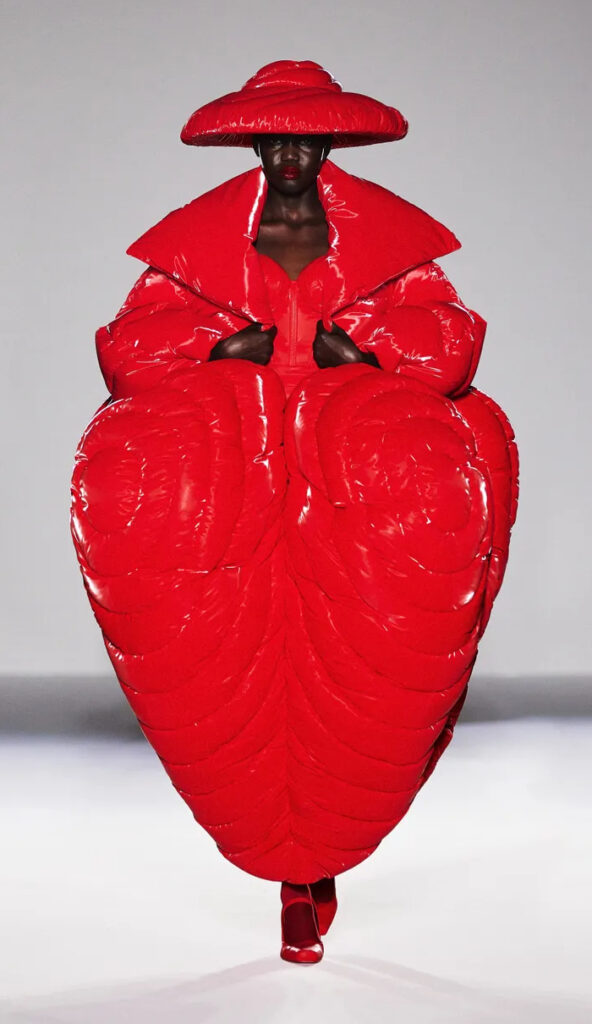
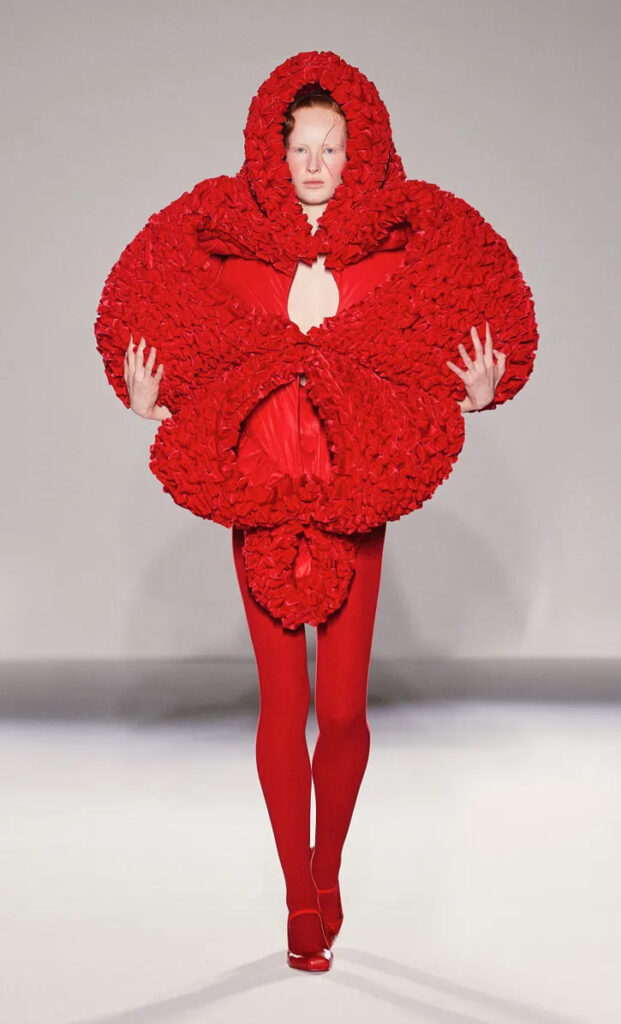
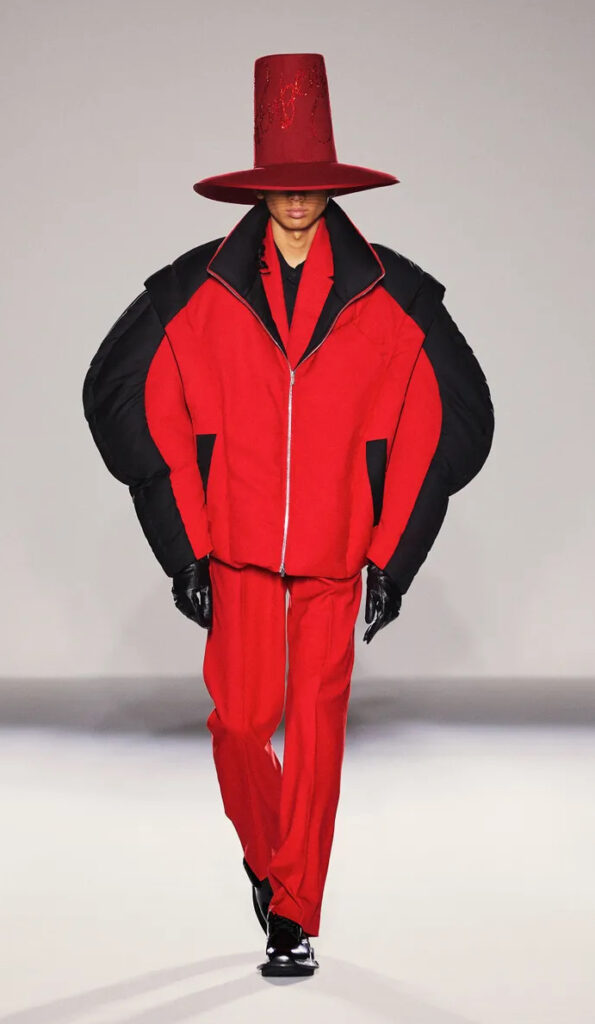
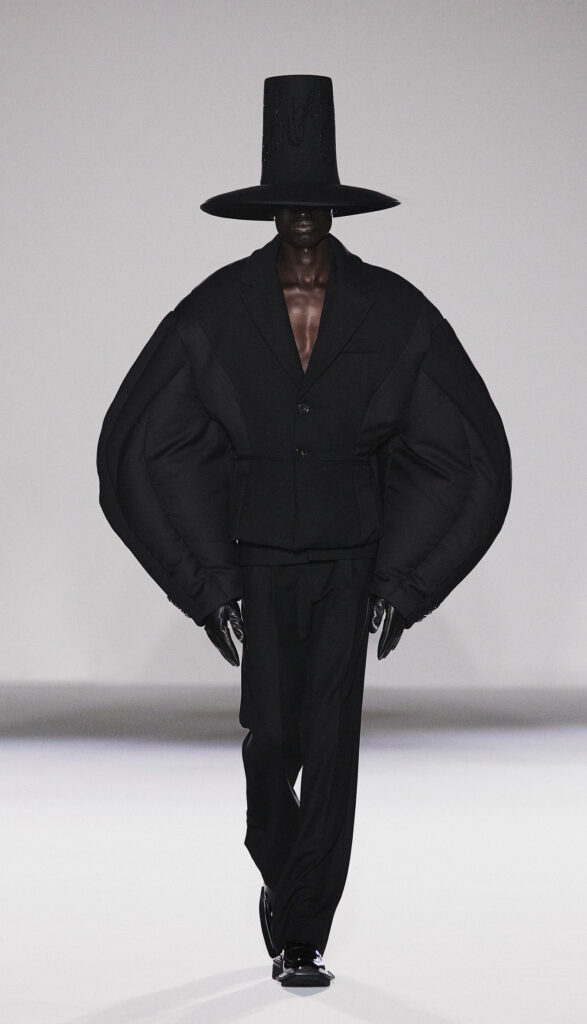
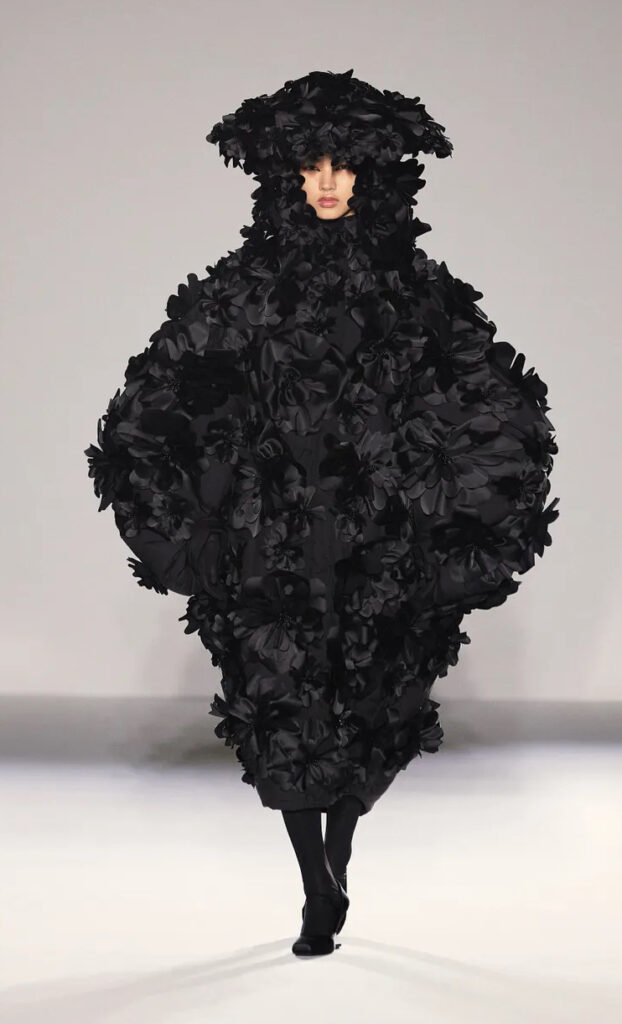
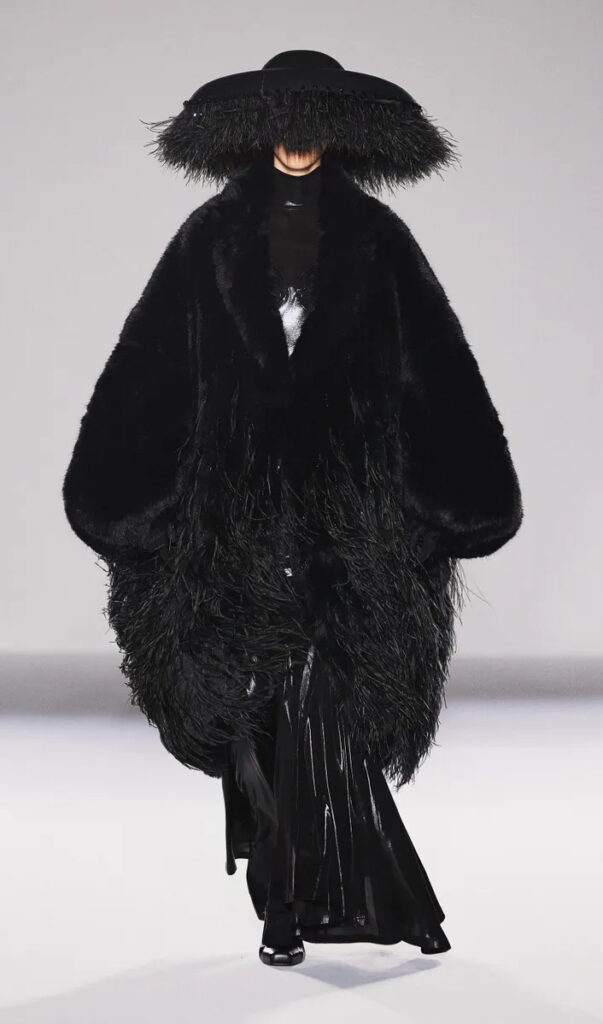
Fall/Winter 24-25 Collection CHENPENG. Photo Credits: Tag Walk
AD: Your designs mainly focus on puffers, what do you find so attractive in designing puffers?
PC: I was born in Jingdezhen, the capital of porcelain in China. I have been fascinated in art since I was a child. In the process of studying in Britain, I began to learn fashion design. At that time, the general environment of the fashion industry still had strict requirements for body shape. I saw a breakthrough, began to study the human body structure, used down material to express the distribution of fat in human musculoskeletal, and designed my graduation work. Down has a high degree of fluffiness, is lightweight, and has strong plasticity, making it the most perfect material for expressing fat distribution. Also, I see puffers like porcelains very much.
AD: In the general design process, what elements of the craftsmanship process do you utilise?
PC: It depends on the collection and what I want to express. I will try all my best to finish the collection at my possibilities. Selected lining and lining materials are used to provide a comfortable fit and soft touch. These materials also need to have good moisture absorption and sweat-wicking properties to keep the wearer dry and comfortable. Using manual cutting and sewing techniques, experienced cutting masters cut the fabric into precise shapes and use fine stitching to ensure the fit and quality of the clothing, making it more fitting to the human body. Choose exquisite buttons and zippers, and pay attention to quality, and fashion in detail. For example, using shell buttons, leather buttons, or customized special zippers to add uniqueness and luxury to clothing. Perform manual embroidery and decoration to enhance the artistic and unique qualities of clothing. By skillfully embroidering it onto clothing with the hands of craftsmen, a magnificent and exquisite effect is created. Strengthening the internal structure is an essential step to ensure the stability and stretchability of clothing patterns. This includes the use of embedded shoulder pads, invisible supports, lining fabrics and other technical means to enhance the three-dimensional sense and stability of clothing and make the overall contour more perfect.
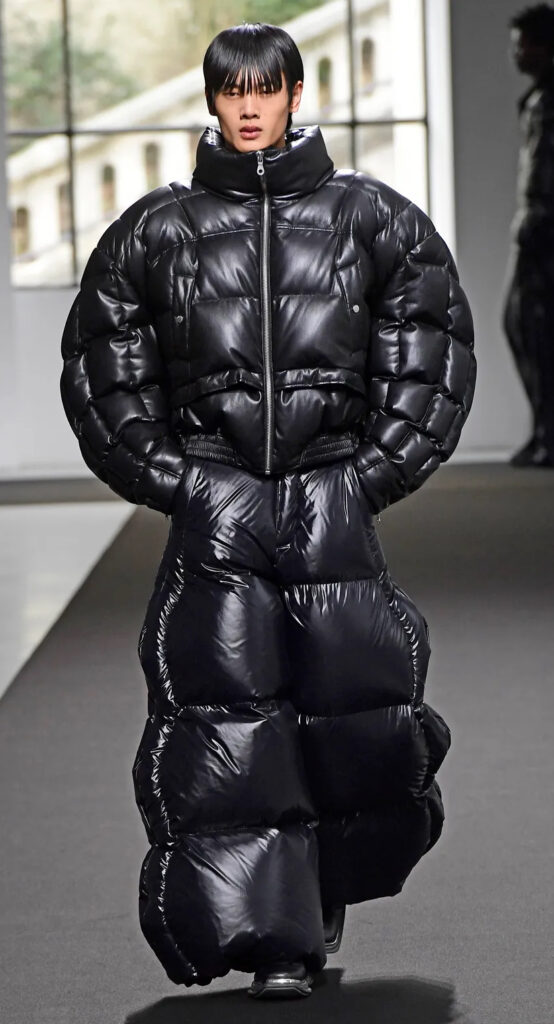
AD: Positioning yourself as a unisex and one-size fashion designer, why do you find it important to focus on these elements?
PC: Our brand puts forward fashion equalitarianism(one-size fashion). Wearing the same dress, people of different body shapes will show different beauty. Nowadays, everyone pursues more personalized expression. Everyone is their own decision-maker. The younger generation has become more and more inclusive. People will gradually blur the reasons for size, gender, skin colour, etc., which is a sign of progress.
AD: What part of the designing process does your nationality influence?
PC: Because I was born in a city full of a strong Chinese cultural atmosphere, Eastern aesthetics have had a great influence on me. After graduating from studying in the UK, my works often blend the cultural aesthetics of both the East and the West, using modern expressions to showcase Eastern elements and genes. There are many fusion and innovation aspects in the silhouette, colour, and material of clothing.
AD: What does it mean for you to be creative? What is creativity based on for you?
PC: Being creative is needed but not necessary. I think designers are not a career created out of thin air. They are based on the culture of the past thousands of years, looking for the shining essence that has been tested for a long time, and then combining the lifestyle of people now and in the future to propose new possibilities. Only in this way can the designed work have stronger vitality and continue to be validated over time.
AD: Who is your client or who do you expect your client to be?
PC: Very diverse. Regardless of gender, height, age, or skin colour, there are no restrictions. So far, my clients include from 5-year-old children to 80 year old fashion enthusiasts. I hope my clients can be anyone, which is also the original intention of the brand.
AD: How does the collaboration with brands such as MONCLER or MM6 shape your own designs? Specifically, what do you gain from these collaborations as a designer?
PC: Most brands recognize CHENPENG’s creativity, so they give me a lot of room to unleash it. I will take the DNA of our partner’s brand as the starting point, and use my ideas in materials, colours, and details to make the public recognize CHENPENG’s collaborative work at a glance. Collaborating with big brands not only gave me higher exposure in media promotion but also taught me the systematic process of brand operation, which has benefited me greatly in commercial development and supplier resource sharing.
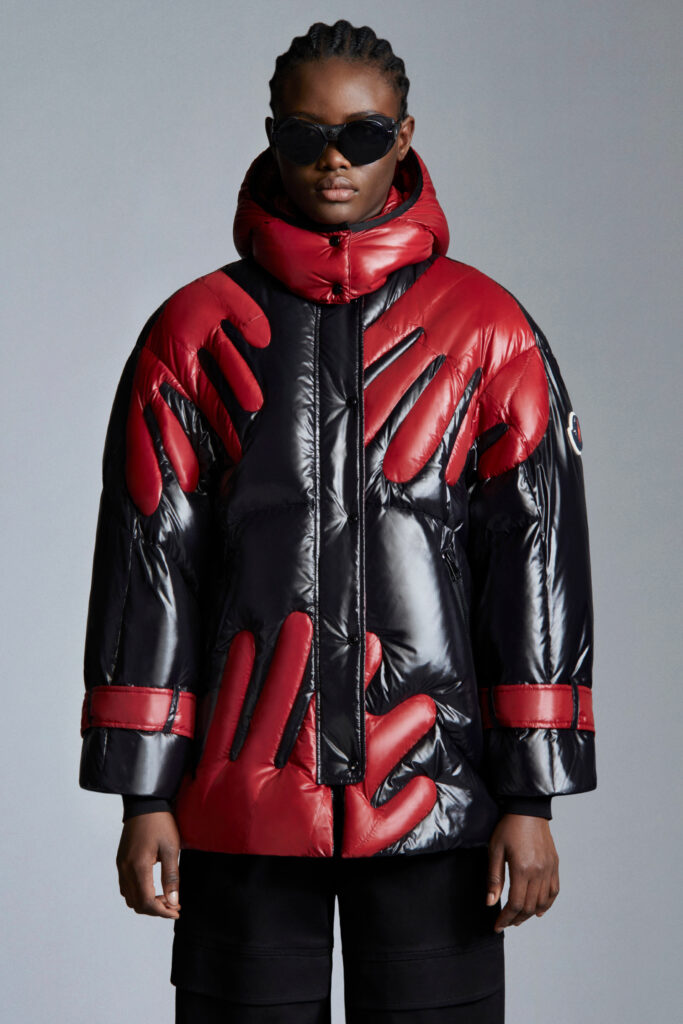
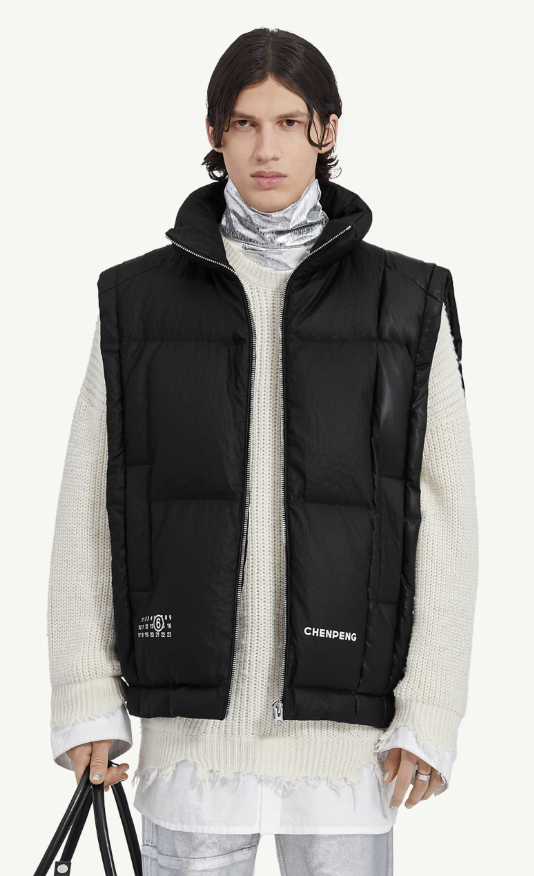
AD: Off-topic, what’s your favourite film or book that you can watch/read over and over?
PC: Every year, I try to visit as many museums as possible, or attend fashion exhibitions of predecessors and luxury brands, and purchase books corresponding to the exhibitions. Before starting a new season of creation, I would repeatedly take them out and flip through them, searching for those shining points and the feeling of design.
AD: How are you trying to break the system of fashion?
PC: I didn’t try to break fashion but found my most comfortable state in interacting with it. For example, most brands release new collections twice a year, while I always release in F/W, and during S/S I always collaborate on projects with business partners. With a calm heart, I’ve found the most balanced state and with that to steadily grow.
AD: To all those upcoming fashion designers or creatives who are struggling to get into the bubble of the fashion system, what would you tell them?
PC: Lack of experience is the biggest difficulty for every young designer. Be sure to have a clear career plan for the future and minimize waste of time. Pure fashion design needs patience and determination, be ready to face loneliness and failure at the beginning. And commercial fashion design needs rapid response and execution, be ready to fight all the time. Believe in yourself and be confident. Always have and always will.
